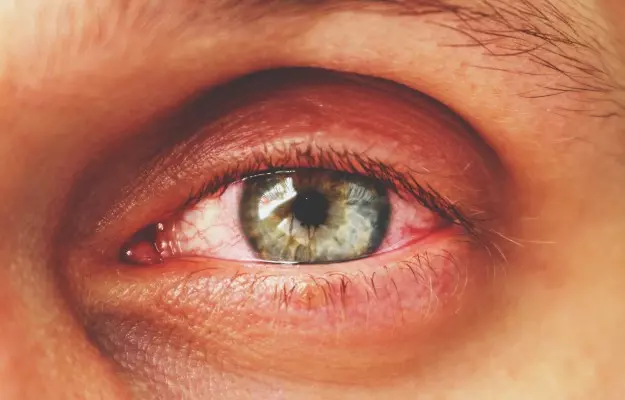We know that the new coronavirus infection, COVID-19, spreads through droplet transmission between humans, or through surfaces contaminated by these droplets when someone with the infection talks, sneezes or coughs near them.
We also know that droplets containing the virus can enter a healthy person’s body through the mucous membranes of their nose, mouth and eyes. That is why personal protective equipment or PPE includes goggles, a mask and a face shield, among other things.
What was less clear until recently was how the virus enters the body through the eyes. Researchers have now postulated a possible point of entry for the virus through the human eye: the conjunctiva or the tissue that lines the inside of the eyelids and covers the whites of the eyes.
This is because conjunctival cells have ACE2 receptors: a kind of receiver cell for the angiotensin-converting enzyme 2 that is present mainly on the surface of lungs, heart and arteries, and helps to lower the blood pressure.
The research, which is in pre-print phase, was conducted by scientists at the Epigenetics and Cell Fates Laboratory, Programme in Stem Cell, Regenerative Medicine and Aging, A STAR Institute of Molecular and Cell Biology, Singapore; Department of Biological Sciences, National University of Singapore; Icahn School of Medicine at Mount Sinai, New York; and the Center for Individualized Medicine, Department of Molecular Pharmacology & Experimental Therapeutics, Mayo Clinic, Rochester, Minnesota, US.
Role of ACE2 receptors
Researchers have found that these ACE2 receptors are crucial to how SAS-CoV-2, the coronavirus that causes COVID-19, enters healthy cells. COVID-19 has spike proteins on its surface that basically fit like a key into these ACE2 receptors, unlocking the healthy cell. Once inside, the virus uses the resources in the healthy host cell to make more copies of itself. (Read more: Role of ACE2 receptors in COVID-19)
To be sure, ACE 2 receptors are crucial to our well-being. It just so happens that this coronavirus has evolved in such a way that it can exploit its structure to cause infection.
Most studies thus far have focused on the virus' attempt to enter the human body through the upper respiratory tract (nose and throat) and lower respiratory tract (trachea and lungs), but not enough has been done to explore the link between transmission through the ocular (eye) route. The Institute of Molecular and Cell Biology study, titled "Potential modes of COVID-19 transmission from the human eye revealed by single-cell atlas", has not been peer-reviewed yet.
Some previous studies have also suggested that the mucosal membranes in the eyes could also act as a route for the SARS-CoV-2 virus to enter the body via direct or indirect contact. Another pre-print study, by researchers at the Johns Hopkins University School of Medicine, titled "ACE2 and TMPRSS2 are expressed on the human ocular surface, suggesting susceptibility to SARS-CoV-2 infection" has also indicated that the virus has been found in tears, which could mean that the human eyes could also act as a potential carrier or a route of entry into the body.
Separately, in March, some ophthalmologists had noted the appearance pink eye or conjunctivitis in some COVID-19 patients. They had also warned that the virus may spread if COVID-19 patients rub their eyes and then touch someone or something else.
The results of these researches come at a critical time during the outbreak of COVID-19. The high rates of infection, as well as rising casualties, had forced countries into complete or partial lockdown. Now, some countries are considering easing restrictions on the movement of people due to a suffering economy. The above-mentioned studies draw our attention once again to the importance of maintaining proper hygiene measures, as we prepare to come out of lockdown. (Read more: How to avoid touching your face during this pandemic)


















